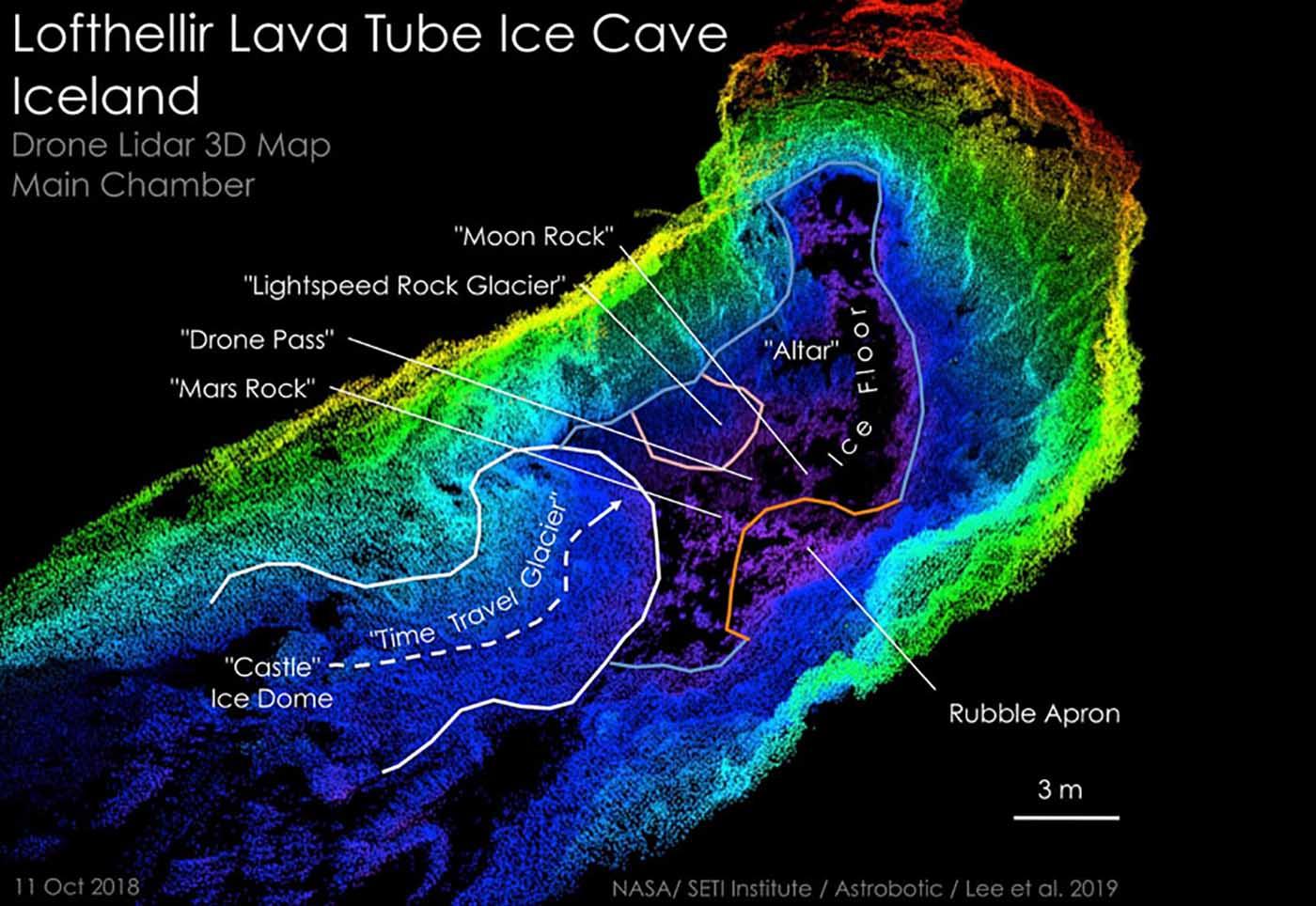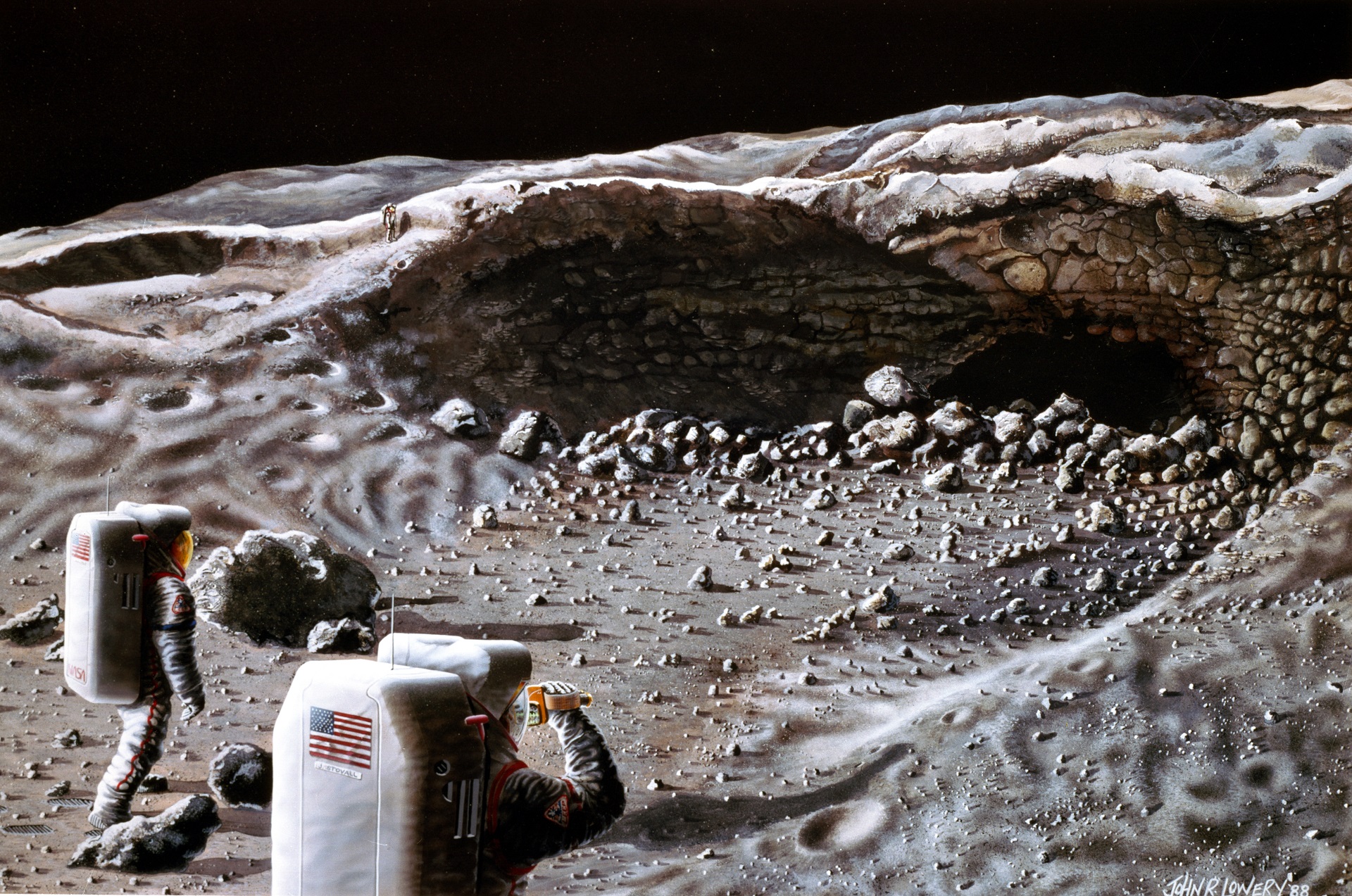Scientific Exploration and Discoveries

Nasa moon caves – Moon caves offer a unique and valuable environment for scientific research and exploration. These subterranean structures provide a protected and stable setting, allowing scientists to study the geological formations and potential for life within the moon’s interior. The exploration of moon caves presents both challenges and opportunities, but their potential impact on our understanding of the moon is significant.
Geological Formations
Moon caves are formed by various processes, including volcanic activity, meteorite impacts, and erosion. The geological formations within these caves can provide valuable insights into the moon’s geological history and evolution. By studying the composition and structure of the cave walls, scientists can learn about the processes that shaped the moon’s surface and interior.
The presence of minerals and other materials within the caves can also provide clues about the moon’s past environment. For example, the discovery of water ice in some moon caves suggests that the moon may have once had a more hospitable climate.
Potential for Life
One of the most intriguing aspects of moon caves is their potential to harbor life. The protected environment of the caves could provide a haven for microorganisms that can survive the harsh conditions on the moon’s surface. Scientists are particularly interested in searching for evidence of extremophiles, organisms that can thrive in extreme environments.
The discovery of life in moon caves would have profound implications for our understanding of the distribution and evolution of life in the universe. It would also provide valuable insights into the potential for life to exist in other extreme environments, such as on other planets or moons.
The recent discovery of moon caves by NASA has reignited interest in the possibility of human habitation on the moon. These caves could provide shelter from radiation and temperature extremes, making them a potential refuge for astronauts. However, the ongoing Russia-Ukraine war has raised concerns about the safety of such a mission.
The conflict has highlighted the dangers of international tensions and the potential for nuclear escalation. Despite these concerns, the exploration of moon caves remains a promising endeavor that could lead to a new era of space exploration.
Challenges and Opportunities
Exploring moon caves presents a number of challenges. The extreme conditions within the caves, including low temperatures, lack of light, and potential radiation hazards, require specialized equipment and techniques. Additionally, the remote location of the caves makes access and exploration difficult.
Despite these challenges, the potential scientific rewards of exploring moon caves are significant. By overcoming these obstacles, scientists can gain valuable insights into the moon’s geological history, potential for life, and its role in the solar system.
NASA’s discovery of moon caves has sparked renewed interest in lunar exploration, particularly among private companies like Elon Musk ‘s SpaceX. Musk has ambitious plans to establish a permanent human presence on the Moon, and moon caves could provide essential shelter and resources for future lunar colonists.
With their potential for scientific discoveries and commercial applications, NASA moon caves are poised to play a significant role in the next chapter of human space exploration.
Technological Advancements for Moon Cave Exploration

Exploring moon caves requires specialized technologies to navigate the unique and challenging environment. Ongoing advancements in robotics, drilling, communication, and power systems are crucial for enabling sustained and effective exploration.
Rovers and Drills, Nasa moon caves
Rovers play a vital role in traversing the rugged lunar terrain and accessing cave entrances. The latest rovers are equipped with high-resolution cameras, advanced sensors, and autonomous navigation capabilities. Specialized drills are designed to penetrate the lunar regolith and collect samples from within the caves.
Communication and Navigation
Reliable communication and navigation systems are essential for maintaining contact with the rovers and ensuring their safe operation. Advanced communication systems utilize multiple frequencies and relay satellites to overcome the challenges of signal propagation within caves. High-precision navigation systems combine inertial sensors, star trackers, and laser rangefinders to provide accurate positioning and guidance.
Power Systems
Sustained exploration requires reliable power sources. Solar panels and batteries are commonly used to harness solar energy during the lunar day. Radioisotope thermoelectric generators (RTGs) provide continuous power during the long lunar nights. Advanced power management systems optimize energy consumption and ensure efficient utilization of available resources.
International Collaboration and Future Missions: Nasa Moon Caves
Moon cave exploration requires a collaborative effort from multiple space agencies around the world. International partnerships bring together diverse expertise, resources, and perspectives, enabling the advancement of scientific knowledge and technological capabilities.
Contributions of Space Agencies
Various space agencies contribute to moon cave exploration missions in specific areas:
- NASA (United States): Mission planning, spacecraft design, robotic exploration, human spaceflight
- ESA (Europe): Spacecraft development, instruments, lunar lander systems
- JAXA (Japan): Rovers, sample collection, space environment research
- CNSA (China): Lunar orbiters, landers, rover development
- Roscosmos (Russia): Spacecraft propulsion, life support systems, cosmonaut training
Future Plans and Human Missions
Future moon cave exploration missions aim to advance scientific understanding, search for resources, and pave the way for human habitation on the Moon.
- Lunar Gateway: A proposed space station in lunar orbit that will serve as a hub for future missions, including cave exploration.
- Human Missions: Long-term plans include sending astronauts to explore moon caves, conduct scientific experiments, and establish a permanent human presence on the Moon.